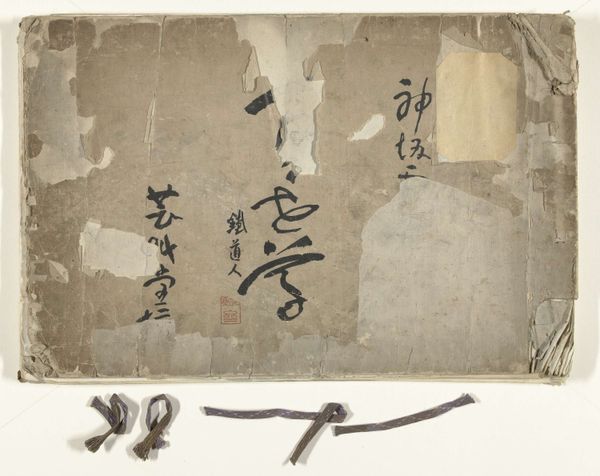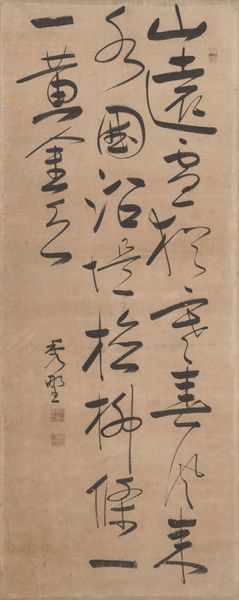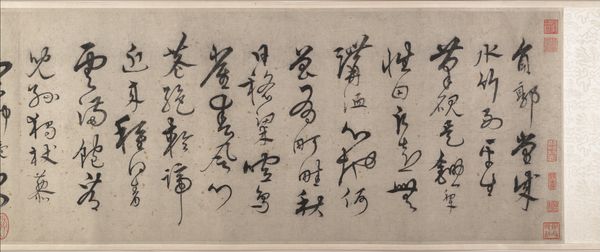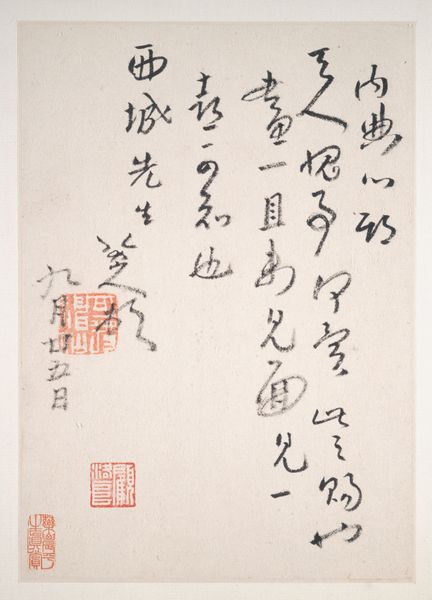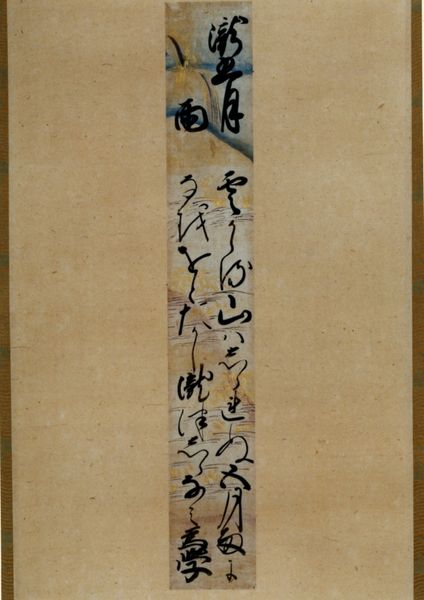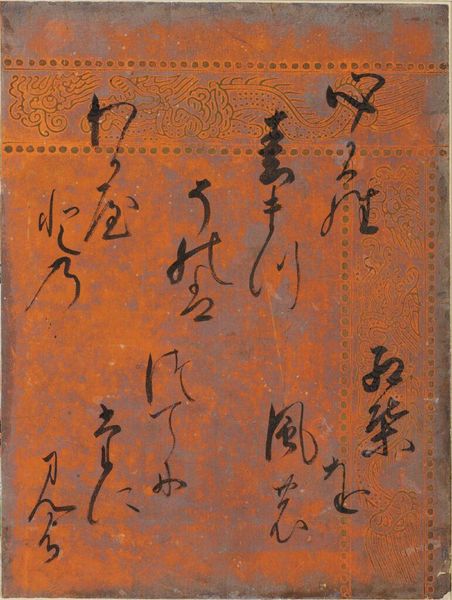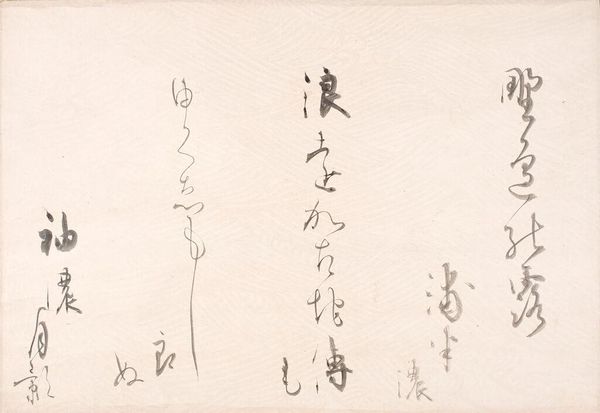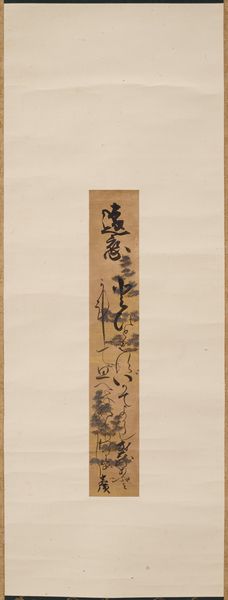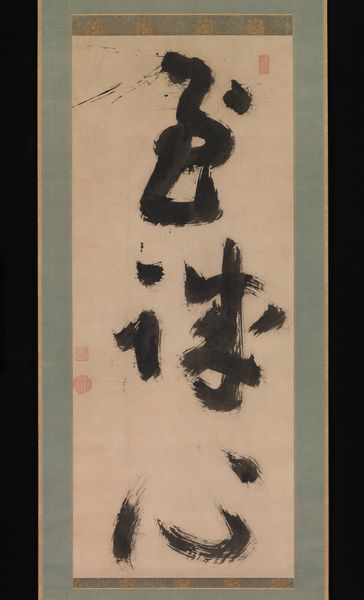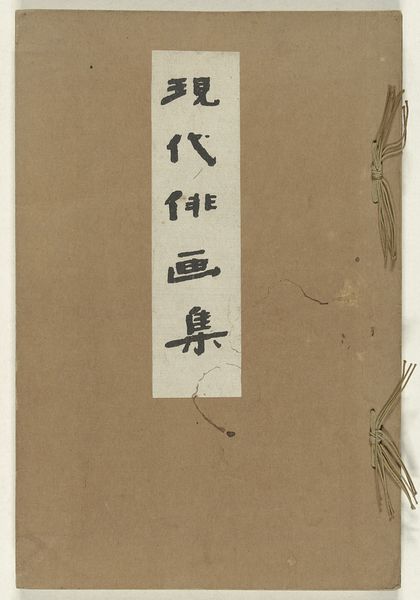
drawing, paper, ink
#
drawing
#
medieval
#
asian-art
#
paper
#
ink
#
line
#
yamato-e
#
calligraphy
Dimensions: 7 15/16 × 6 5/16 in. (20.16 × 16.03 cm) (image)53 1/2 × 15 1/2 in. (135.89 × 39.37 cm) (mount, without roller )
Copyright: Public Domain
Curator: Here we have a page from the Tsurayuki Anthology, attributed to Fujiwara Sadanobu, created around 1112. It is crafted with ink on paper. What strikes you first about this work? Editor: The patterned paper immediately catches my eye. It creates such a delicate, almost ephemeral ground for the forceful strokes of calligraphy. There’s a palpable tension between the softness and the sharpness. Curator: That’s interesting. I’m drawn to how the calligraphy interweaves with the faint floral patterns on the paper. It reminds me that written words were once deeply intertwined with aesthetic expression, where each character holds not only semantic but also spiritual significance. Editor: Exactly. Look at the variation in the line work, how the ink bleeds in places and remains razor-sharp in others. Semiotically, each of those variances alters our perception. They evoke shifting emotional states. It adds complexity. Curator: I agree. The subject is also significant. The Tsurayuki Anthology showcases poems that evoke nature, love, and mortality – universal themes represented through specific cultural lenses. The flora scattered across the background reinforce the literary theme, anchoring it visually. Editor: In considering cultural significance, do you believe the formal characteristics have influenced how subsequent artists responded to themes within Yamato-e style painting and calligraphy? It all feels like a blueprint. Curator: Without a doubt. These visual motifs of poetry coupled with illustrations resonate even today. The blending of writing and art serves as a lasting representation of an era in Japanese culture that valued harmony. It is preserved within the collective consciousness. Editor: It's compelling how the artist uses so few elements – paper, ink, line – to generate such a rich visual and cultural narrative. Thanks, this exploration altered how I perceived this medieval artifact! Curator: Indeed! Thinking about the layers of symbolic and stylistic connections offers a new lens for interpretation, offering me richer understanding of how the past informs the present.
Comments
minneapolisinstituteofart about 2 years ago
⋮
This page is from volume two of the poems of Ki no Tsurayuki. This book and the poems of Lady Ise were the two volumes broken up early in the century to make the Ishiyama-gire fragments. This is the back side of a left page with lion rondels and vine motif printed in mica on white-coated paper. The grasses, branches and birds were drawn with a combination of gold and silver inks. The calligraphy is by Fujiwara no Sadanobu, the leading calligrapher of the late Heian period. His writing is swifter, bolder and more unconventional than that of the writer of the Ise Shu pages. We have examples of Sadanobu's style in writing Chinese characters in several fragments in the kohitsu tekagami Sokyo.
Join the conversation
Join millions of artists and users on Artera today and experience the ultimate creative platform.
